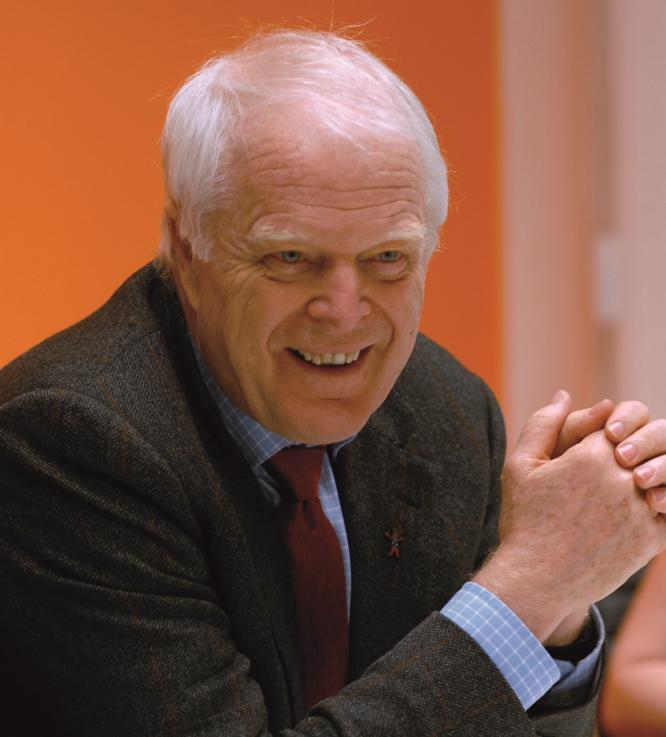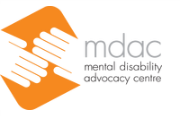2. Context and aim

Photo: Thomas Hammarberg. © MDAC.
“The core of the right [to live in the community], which is not covered by the sum of the other rights, is about neutralizing the devastating isolation and loss of control over one’s life.”
Thomas Hammarberg
Former Council of Europe Commissioner for Human Rights
MDAC Honorary President
2(A). Context
An estimated 2 million people with mental disabilities are held, against their will, in institutions across the Council of Europe region alone. These people are denied a right that many people take for granted – namely, the right to choose where and with whom we live – and they are denied alternative forms of accommodation. They are subjected to a wide range of abuse, exploitation, and violence inside long-term institutions, become invisible in the public domain, and are a low priority for many governments.
Top-down advocacy by intergovernmental organisations has brought successes in some countries, drastically reducing the number of beds in psychiatric hospitals. It has also been successful in establishing the right to live in the community in international law and rhetoric. But the numbers of residents in long-stay social care institutions have remained stagnant, with very few good practice examples to speak of. Monitoring in the Czech Republic, for example, suggests that the process of closing social care institutions was so badly managed that people with intellectual disabilities ended up being placed in psychiatric institutions.[1] This is because the government is simply paying lip-service to the right to live in the community.
Bottom-up grassroots initiatives run by small NGOs have had an effect in demonstrating that alternatives to institutions are viable, but no government has scaled up these pilot projects. Instead, services continue to be largely centralised in large or small institutions, rather than in the community. Segregation is posed as ‘therapy’ and ‘care’, and governments use euphemisms such as “group homes” and “living centres” to avoid being accused of the truth: that they are building new institutions which will segregate future generations of people with mental disabilities. Paternalism pervades many government policies, seeking to legitimise proxy decision-making on behalf of people with mental disabilities with reference to their “best interests” (subjecting them to institutionalisation) rather than respecting their will and preferences (to live in the community).
Tens of millions of Euros in EU structural funding are used by governments in contemporary Europe to maintain, renovate and even build new institutions. This means that European taxpayers’ money is being used to fund systemic human rights violations, denying many people with disabilities the opportunity of gaining their independence. Political decisions in Brussels have financed a decrepit and abusive system of institutionalisation, rather than investing in inclusion and community development. MDAC uses litigation to challenge these discriminatory funding policies and secure restitution to the thousands of people affected.
Most governments have not yet enacted the laws and policies necessary for securing safe and inclusive communities for people with mental disabilities. Large, abusive institutions are still the norm in much of Europe and beyond. Mental health and social care professionals, as well as local communities, lobby strongly to maintain the status quo because of the financial benefits to them and the fear of change.
Stigma against people with mental disabilities remains pervasive. Many governments lack the long-range vision it takes to initiate reform, and policy-makers lack the expertise to shift budgets, monitor benchmarks and involve civil society. The media is often against the notion that people with mental disabilities should live in our communities, and governments rarely respond to the popular press with arguments grounded in human rights. It falls then to civil society to play a watchdog role, hold States to account, and promote inclusion.
Courts have only in the past few years started to get to grips with the fact that people with mental disabilities are subjected to abuse and neglect as a result of institutionalisation, and that ill-treatment should not be part of a mental health treatment package. Courts can play a key role in implementing the right to live in the community, by ordering local governments to put in place community support services which prevent institutionalisation. They can also play a part in finding that domestic law fails to give effect to international standards and, by doing so, compel governments to take action.
MDAC recognises that courts need information and ‘good cases’ (good facts, with good evidence) to enable them to issue judgments which advance rights. The role of the lawyer in preparing and conducting high quality litigation is essential in supplying this need. MDAC is a small organisation that plays a convening and support role in litigation internationally. Local lawyers are urgently needed to assist in bringing the cases to domestic courts and creating a global impetus towards the realisation of the right to live in the community.
2(B). Aim and outline
MDAC’s vision is a world of equality – where emotional, mental and learning differences are valued equally; where the inherent autonomy and dignity of each person is fully respected; and where human rights are realised for all persons without discrimination of any form.
Within its “My Home, My Choice” campaign, MDAC’s goal is that people with mental disabilities are enabled to participate fully in our communities, where they are safe and supported to live in homes that they choose. This means that institutions should be closed, and that people responsible for segregation, torture and abuse are held to account.
This handbook is for lawyers who want to use the law to help advance the right to live in the community for people with mental disabilities. It provides lawyers with tools to bring legal challenges against institutionalisation (often long-term), segregation and isolation, and to call for community support services.
MDAC has developed this handbook to consolidate and share its learning about how strategic litigation can be used as a tool to advance these rights. Litigation in this area addresses a complex set of connected rights, and often MDAC asks courts to interpret obligations under the United Nations Convention on the Rights of Persons with Disabilities (UN CRPD). The CRPD has become a vital tool in successfully securing the right to community living through the courts, particularly in countries where domestic law fails to guarantee the relevant rights, or where there are no legal precedents to guide the courts.
This handbook is written with the particular experience of lawyers in Europe in mind. It draws on the CRPD, and also on the European Convention on Human Rights (ECHR). Specific challenges are present in each jurisdiction, requiring a high degree of flexibility and creativity from legal representatives. Whilst the contents of this handbook address European jurisdictions, it is hoped that it may also be of interest further afield.
As with all human rights litigation, lawyers must tailor strategies to the concrete contexts in which the violations of the right take place, and nuances of differing systems in specific courts or tribunals. This handbook does not suggest a “one size fits all” model for conducting litigation, nor does it seek to provide solutions to the multiplicity of challenges that may arise in this developing area of law. Instead, the intention is to provide a framework which can support creative lawyers to prepare for and successfully litigate the right to community living on behalf of clients who may be in particularly vulnerable or precarious positions.
This chapter situates the right to community living as a key development of international law seeking to redress a history of mass-institutionalisation and exclusion suffered by millions of people with disabilities, a situation which continues in much of Europe today. Chapter 3 sets out the purpose of strategic litigation, and offers practical tips about initiating litigation in this area, and what to do after judgment. It also describes how MDAC can help lawyers around the world to take such cases.
Chapter 4 presents some of the main arguments which lawyers can deploy in the courtroom to advance the right to live in the community. To show the concrete application of these arguments, five hypotheticals are set out – typical case scenarios – and the arguments are applied to each of them. Chapter 5 examines the practicalities of this type of litigation, providing a number of strategies to employ during the court process to overcome some of the barriers that can arise. These are based on practical questions and problems faced by lawyers working with MDAC over a number of years.
[1] Mental Disability Advocacy Center, Cage beds and coercion in Czech psychiatric institutions, (Budapest: MDAC, 2014), 23.

